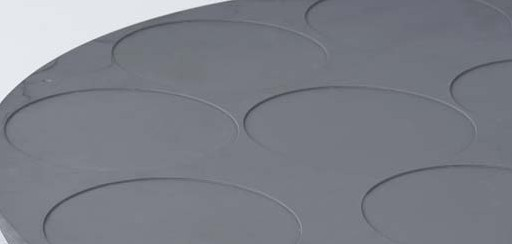Reaction-sintered silicon carbide properties and main uses? Silicon carbide can also be called carborundum or fireproof sand, is an inorganic compound, divided into green silicon carbide and black silicon carbide two. Do you know the properties and main uses of silicon carbide? Today, we will introduce the properties and main uses of silicon carbide.
Reactive sintering silicon carbide is the use of quartz sand, calcined petroleum coke (or coal coking), wood slag (the production of green silicon carbide needs to add food salt) and other raw materials, through the electric heating furnace continuous high temperature smelting.
Properties of reaction-sintered silicon carbide:
1. Thermal conductivity and thermal expansion coefficient of silicon carbide. As a kind of refractory material, carbonized brick has excellent resistance to shock. This is mainly manifested in its strong thermal conductivity (heat transfer coefficient) and relatively low coefficient of thermal expansion.
2, the conductivity of silicon carbide. Silicon carbide is a semiconductor material, its conductivity varies with the type and amount of impurities introduced into the crystallization, and the resistance is in the middle of 10-2-1012Ω·cm. Among them, aluminum, nitrogen and boron have great influence on the conductivity of silicon carbide, and the conductivity of silicon carbide with more aluminum increases significantly.
3. Resistance of silicon carbide. The resistance of silicon carbide changes with the change of temperature, but within a certain temperature range and the temperature characteristics of the metal resistor are reversed. The relationship between resistance and temperature of silicon carbide is more complex. The conductivity of reaction-sintered silicon carbide increases with the temperature rising to a certain value, and the conductivity decreases when the temperature rises again.
The use of silicon carbide:
1, wear-resistant materials – mainly used to make sand wheel, grinding sandpaper, whetstone, grinding wheel, grinding paste and photovoltaic products in photovoltaic cells, photovoltaic cells and components surface grinding, grinding and polishing.
2, high-end refractory material – can be used as a metallurgical industry deoxidizer and corrosion resistant materials, to make continuous high temperature kiln prefabricated components, fixed parts, etc.
3, functional ceramics – not only can reduce the volume of kiln, but also improve the quality of industrial kiln products, reduce cycle time, is the ideal indirect material for ceramic glaze sintering, continuous high temperature non-oxide ceramics, reflecting sintered porcelain.
4, rare metals – iron and steel enterprises, metallurgical industry concentrator field, have a certain application.
5, other – used to make far-infrared radiation coating or silicon carbide plate far-infrared radiation dryer.
Silicon carbide because of smooth organic chemical properties, high heat transfer coefficient, small linear expansion coefficient, good wear resistance, in addition to wear resistant materials, there are some other main uses, such as: with a new process to silicon carbide powder glue in the centrifugal impeller or cylinder body cavity, can improve wear resistance and increase the service life of 1 to 2 times; Used to make high grade refractory material, high temperature shock resistance, small size, light weight and high strength, environmental protection and energy saving effect is obvious. Low-grade silicon carbide (containing about 85% SiC) is a good deoxidizing agent, which can be used to accelerate the iron making rate, and is conducive to manipulating the composition and improving the quality of steel. In addition, silicon carbide is also used to make many electric heating materials silicon molybdenum rod.
Post time: Sep-11-2023






